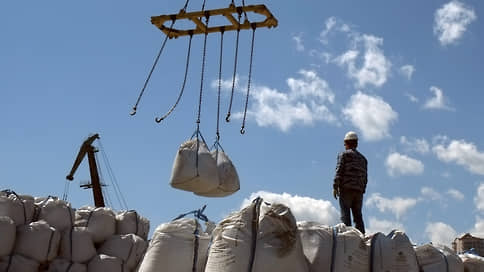The cement market has moved to sustainable growth
[ad_1]

Despite the subdued performance of residential construction, the cement market has moved to a sustainable growth. Consumption in June grew by 10.8%, and in the first half of the year – by 4.4% yoy due to the construction of infrastructure and social facilities. An increase in cement consumption also leads to an increase in imports, which may become a problem for plants in the south and in the center of Russia.
Consumption of cement in Russia in June increased by 10.8% year-on-year, to 7.2 million tons, production – by 9.4%, to 7 million tons, Soyuzcement calculated. June is an indicative month for the market due to the seasonal intensification of construction work. But overall growth can be called sustainable: in April, cement consumption grew by 8% yoy, in May – by 13.4%. Vladimir Guz, managing partner of SMPRO, says that in the second quarter, the volume of cement consumption increased by 9.7% yoy, although in the first quarter the figure decreased by 4.1%. Due to the beginning of the revival, cement consumption grew by 4.4% year-on-year in the first half of the year.
In connection with the revival of demand, Soyuzcement abandoned its previous forecast, which assumed a decrease in cement consumption in Russia this year by 10%, to 55 million tons. A new forecast can be formulated at the end of the summer, says Denis Usoltsev, Head of the Marketing and Strategic Analysis Department at Cemros. Mr. Guz specifies that July-August is also characterized by high seasonal consumption. So far, he is worried about the decrease in cement supplies by rail in the first ten days of July by 5.5% compared to last year. This could be a continuation of delivery problems due to lack of capacity and a signal for a change in demand, the expert says. Cementum Commercial Director Ekaterina Molodtsova expects the cement market to continue to grow: the company’s enterprises are working at full capacity and ahead of the production program. Cement consumption will be comparable to 2022, she predicts.
Consumption of cement is growing, despite the restrained dynamics of housing construction. According to Dom.RF analysts, in the first six months of 2023, permits were issued for the construction of apartment buildings with a total area of 27.9 million square meters. m, which is 7.7% less than in the same period in 2022. Housing construction is only one of the key sectors of cement consumption, points out Vladimir Guz. He attributes the current growth to a combination of factors: last year’s reduced base, which forced this construction season in early spring in Moscow and Kazan, and growing demand in infrastructure construction. Denis Usoltsev notes the growth in the share of infrastructure facilities in the structure of cement consumption.
NEO project manager Dmitry Ryabov points to the intensification of road construction, projects for the development of railway infrastructure, a program for the reconstruction of urban electric transport, which was funded by 200 billion rubles, the construction of bridges, new airports, etc. More than 600 schools and social facilities are being built in Russia with a total investment of 593 billion rubles, he added. Mr. Ryabov notes that the government seeks to increase investment in infrastructure construction, which requires a significant amount of cement, but the development of events also depends on external factors.
In the context of a general increase in cement consumption, the import of the material is also growing. According to Soyuzcement, 0.31 million tons of products were imported into the Russian Federation in June, which is almost twice as much as in June 2022. Although imports account for only 4.3% of the total volume of cement consumption, Denis Usoltsev is alarmed by the growth in this indicator. “The share of imports seems small against the background of all-Russian figures, but the supply of cement from Iran to the Astrakhan region and Dagestan, the import of Belarusian cement to the Central Federal District have a very significant impact,” he says. Denis Usoltsev points out that the factories located here do not understand now whether they should prepare equipment and production lines for 2024–2025. Ms. Molodtsova adds that Russian cement producers in general still have difficulties with the supply of spare parts for scheduled repairs and modernization.
[ad_2]
Source link





